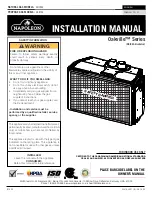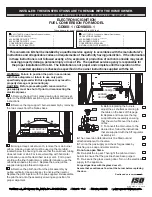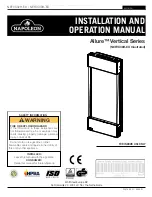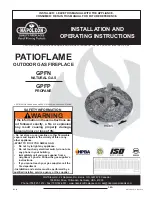
12-01
15
34922 Rev B
T4800 INSTALLATION INSTRUCTIONS
WARNING!
Maintain a minimum of 2 air clearance to all
parts of the chimney system at all times!
Fail-
ure to maintain this 2 air clearance will cause
a structure fire.
CAUTION:
Inner flue and outer liner sections cannot be dis-
assembled once locked together. Plan ahead to
ensure the proper installation height is achieved
with the selected chimney components.
Figure 12 - Installing an Insulation Shield
NOTE:
You must provide support for the pipe dur-
ing construction and check to be sure inadvertent
loading has not dislodged the chimney section
from the fireplace or at any chimney joint.
WARNING!
When chimney sections exceeding six feet in
length are installed between an offset and re-
turn, structural support must be provided to re-
duce off-center loading and prevent chimney
sections from separating at the chimney joints.
Figure 13 - Offset/Return with Stabilizer
6. Attic Insulation Shield
An insulation shield should be installed when there
is a possibility of insulation coming into contact with
the factory built chimney system. The insulation shield
is installed by positioning it over the vertical chimney
section where it penetrates a firestop spacer. The
firestop spacer will support the insulation shield. See
Figure 12.
7. Double-checking the Chimney
Assembly
Continue assembling the chimney sections up
through the firestop spacers as needed. While doing
so, be aware of the height and unsupported chimney
length limitations that are given on page 11 under
Chimney Requirements.
Check each section by pulling up slightly from the top
to ensure proper engagement before installing the
succeeding sections. If they have been connected
correctly, they will not disengage when tested.
8. Securing the Chimney System
When offsets and returns are joined to straight pipe
sections, they must be locked into position with the
screws provided (outer only), using the predrilled
holes. To prevent gravity from pulling the chimney
sections apart, the returns and the chimney stabilizers
have straps for securing these parts to joists or rafters.
See Figure 13.














































